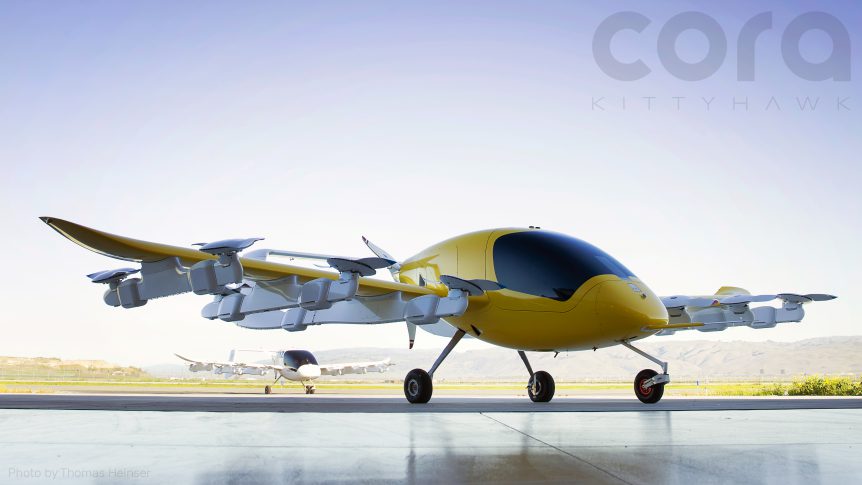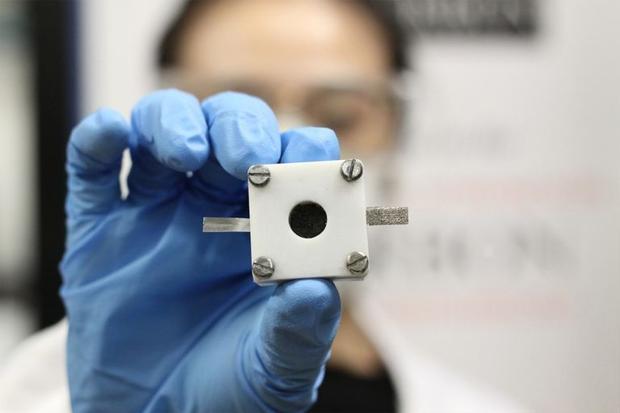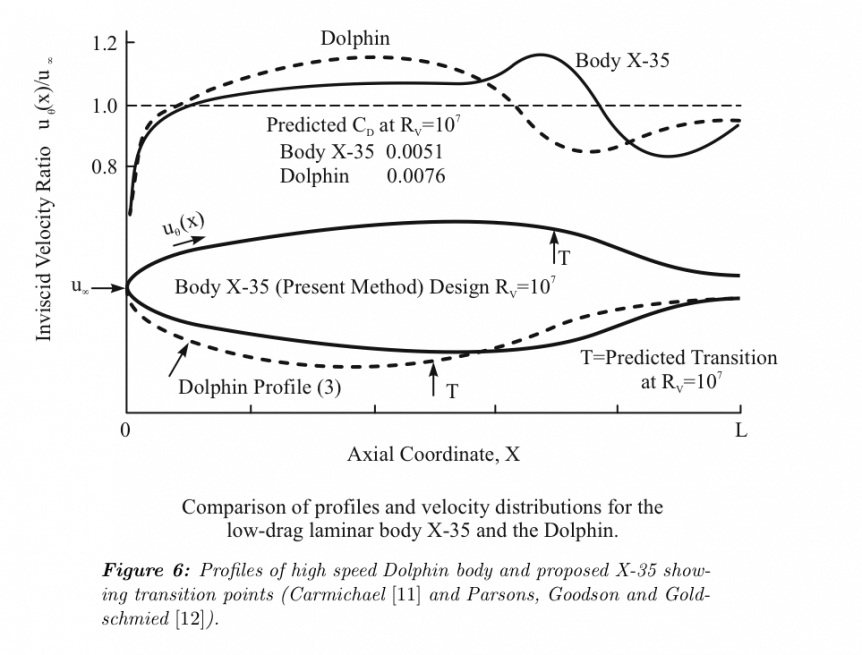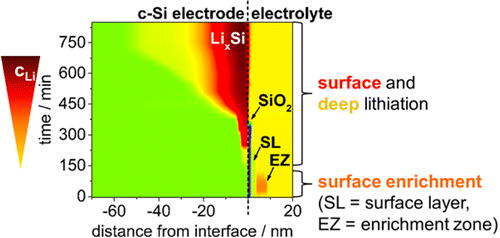Different Names, Different Configurations Zee, One of two aircraft companies funded by Google founder and CEO Larry Page, has been a highly mysterious business. Its web pages mostly gave discrete job descriptions for those willing to sign up for a mostly undefined mission. Occasional glimpses of patent drawings, spy shots of a multi-rotor craft in Google’s Mountain View, California parking lot came into view, and later, in-flight shots of other, different looking craft came from Hollister, California. Kitty Hawk, the other company funded by Larry Page, seems to have subsumed Zee and produced a 12-rotor, single-propeller aerial taxi about the size of a Cessna 150, but capable of vertical takeoffs and landings and seamless transitions to forward flight. A white example has flown at Hollister airport and a yellow version at a field in New Zealand. An Almost Epic Journey The intellectual, physical and geographical journey of this craft is almost epic, and seems to have resulted in a 13-motored …
Recharging Technique Makes Zinc-Air Batteries a Viable Alternative
Lithium-ion and lithium-polymer batteries face several problems: they are not making great leaps forward that we hope for, they occasionally burst into flame, and they weigh too much to be all that practical in a pure-electric airplane. Researchers peer over the alternatives, magnesium, manganese, aluminum, and now, after several false starts in recent years, zinc. University of Sydney scientists claim to have found a three-stage method of charging zinc-air cells that promises greater energy density and longevity. One selling point – the relative abundance and low cost of zinc, such cells are cheaper to produce than lithium equivalents. They theoretically can store up to five times more energy than lithium-ion cells, are less prone to burst into flame, and are even more environmentally friendly. What’s not to like? Until now, they’ve been difficult to recharge. ReVolt tried developing a rechargeable zinc-air battery with an ARPA-E (Advanced Research Projects Agency – Energy) grant, but gave up after two years. Explaining that …
Not a Goldschmied Fuselage, but Still Wonderfully Low Drag
Following your editor’s blog entry on the Prandtl wing and erroneously named Goldschmied fuselage, he received this correction from Dr. Brien Seeley, President of the Sustainable Aviation Foundation and one of the creators of the body in question. “However, it is, I think, important to note: We did not fabricate a Goldschmied body and it is incorrect to refer to ours as one. Ours is original, unique and it does not at all rely upon Goldschmied’s annual suction approach (aft boundary layer treatment). A Goldschmied body studied at Cal Poly is shown along with a link to its 205 page study. It differs by having a pointed nose and sharp convergence at the rear annular inlet to create the concave internal diffuser. To gain a better idea of what a real Goldschmied body is, your editor reviewed the thesis by a Cal Poly graduate student that details his efforts to test Fabio Goldschmied’s claims for his radical fuselage design. Dr. …
Making Silicon Anodes in Large Batches
A Long-term Collaboration Dr. Jaephil Cho is a well-known battery researcher and inter-continental associate of Dr. Yi Cui of Stanford University. The pair has collaborated on many ways to improve battery performance and longevity, and both have appeared at various electric aircraft symposia. They have even inspired others in related research. Dr. Cho and his team at Ulsan National Institute of Science and Technology (UNIST) in South Korea announced a way to make a new generation battery anode material – a big move toward mass production of improved cells. Dr. Cho’s team of researchers affiliated with Ulsan National Institute of Science and Technology (UNIST), South Korea, claims to have made yet another step towards finding a solution to accelerate the commercialization of silicon anodes for Lithium-ion batteries. A Next-generation Hybrid Anode As reported by UNIST, “Prof. Cho and his research team have developed a new type anode material that would be used in place of a conventional graphite anode, which they …
Even with Batteries, Paul MacCready Was Right
Dr. Paul MacCready repeatedly urged us to do more with less, getting big results from modest use of materials. That philosophy may be upheld yet once again by researchers from the Helmholtz-Zentrum Berlin (HZB) Institute of Soft Matter and Functional Materials. As reported here many times, people like Dr. Yi Cui at Stanford University, researchers at MIT, the Fraunhoffer Institute in Germany and many others are attempting to find the magic combination of ingredients that will allow us to transcend the weight penalty we currently trade for payload in heavier-than-desired electric aircraft. Scientists at the HZB, led by by Prof. Matthias Ballauff have directly observed for the first time a lithium-silicon half-cell during its charging and discharge cycles. Dr. Beatrix-Kamelia Seidlhofero carried out the experiments using the neutron source located at the Institute Laue-Langevin in Grenoble, France. She explains, “We were able to precisely track where the lithium ions adsorb in the silicon electrode using neutron reflectometry methods, and also …
Battery 500 Consortium – A Budget Program with Potentially Big Payback
The federal government is creating yet another round of incentives to “spark” development of “significantly smaller, lighter and less expensive batteries.” A consortium of researchers led by Pacific Northwest National Laboratory (PNNL) will receive up to $10 million a year over five years to perk up battery performance, with the goal of creating a 500 Watt-hour per kilogram battery pack, about three times that of currently available commercial offerings. The new batteries should be “reliable, safe and less expensive,” according to consortium director and PNNL materials scientist Jun Liu. Research will come from partners nation-wide, including: Brookhaven National Laboratory Idaho National Laboratory SLAC National Accelerator Laboratory Binghamton University (State University of New York) Stanford University University of California, San Diego University of Texas at Austin University of Washington IBM (advisory board member) Even though the goals and the budget seem similar to those explained by Energy Secretary Steven Chu two years ago, his directive included research on alternative materials, such …
Yi Cui and team Devise a 10X Anode
Batteries are complex things to design and make, with materials scientists and chemists facing unlimited numbers of options for materials choices, formulations and proportions, and manufacturing techniques that will make hoped-for performance attainable on a commercial level. Yi Cui and a distinguished array of undergraduate and graduate students at Stanford University have written 320 academic research papers since 2000, with the rate of publication seeming to increase every year. To put icing on that multi-layered cake, Dr. Cui has helped found his own battery company, Amprius, using his depth of knowledge to take batteries in directions interesting enough to draw the attention of well-known investors – including Stanford. The only recent information on the web site today shows the firm is looking for a battery scientist and a battery engineer. His academic and research work continue, though, with his latest efforts producing a turn away from his work with silicon – ,making a novel lithium/carbon electrode with extremely high volumetric …
Caging Silicon Anodes with Graphene
Dr. Yi Cui of Stanford University has expanded the idea of “battery” to include conductive ink on paper, fruit-like clusters of energy-storing capsules, and now, nano-sized graphene cages in which the energy can romp like a hamster in a plastic ball. He will be on hand at this year’s Sustainable Aviation Symposium on May 6, at the Sofitel San Francisco Bay hotel. His pioneering work with silicon as an electrode material goes back at least ten years, and has focused on overcoming silicon’s two major problems in battery use. Silicon expands and begins breaking down during repeated charge-discharge cycles. It reacts with battery electrolyte to form a coating that progressively destroys performance. The combination of crumbling and coating finally makes the battery inoperable. His group at Stanford had found a way to “wrap every silicon anode particle in a custom-fit cage made of graphene, a pure form of carbon that is the thinnest and strongest material known and a great conductor …
Potassium Graphite Batteries?
The greatest obstacle to discovery is not ignorance – it is the illusion of knowledge. Daniel J. Boorstin Oregon State University researchers in Corvallis, Oregon have worked around an intellectual roadblock they say has kept potassium from serious consideration as a battery material for over eight decades. This could be good news, since potassium is more plentiful and lower cost than lithium, and according to OSU scientists, almost as energetic. Xiulei (David) Ji, the lead author of the study and an assistant professor of chemistry in the College of Science at Oregon State University. points out that potassium-ion batteries haven’t been considered since the Hoover administration. Ji said, “For decades, people have assumed that potassium couldn’t work with graphite or other bulk carbon anodes in a battery. That assumption is incorrect.” Seeing around that conventional wisdom opens new alternatives to the lithium used in electrodes of lithium-ion batteries. Even though Li is highly energetic, potassium comes close and may be …
EAS IX: Materials Design for Battery Breakthroughs
Dr. Yi Cui’s presentation title ended with, “from Fundamental Science to Commercialization,” an indication of the long, tough road that new developments are forced to take. Considering that Sony introduced the Lithium battery as a commercial entity in 1991 (and that following at least an 18-year slog from laboratory to mass production), mostly incremental changes have come for the chemistry, echoing Dr. Cui’s pronouncement at EAS III that lithium batteries followed a “growth curve” of about eight percent per year, meaning that about every nine years, they should double in performance. Cui’s estimate has been borne out in reality, Nature magazine reporting in 2014, “Modern Li-ion batteries hold more than twice as much energy by weight as the first commercial versions sold by Sony in 1991 — and are ten times cheaper. But they are nearing their limit. Most researchers think that improvements to Li-ion cells can squeeze in at most 30% more energy by weight.” Cui spoke of attempting …






